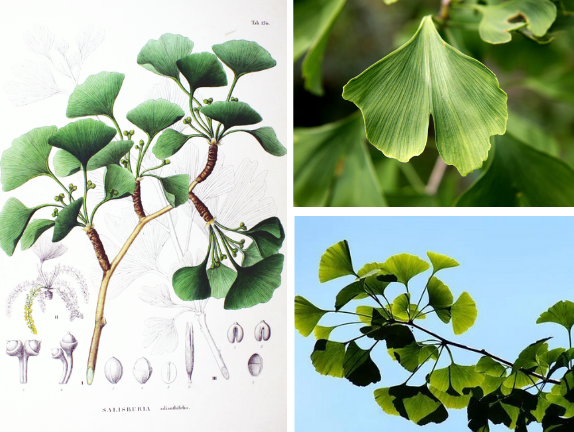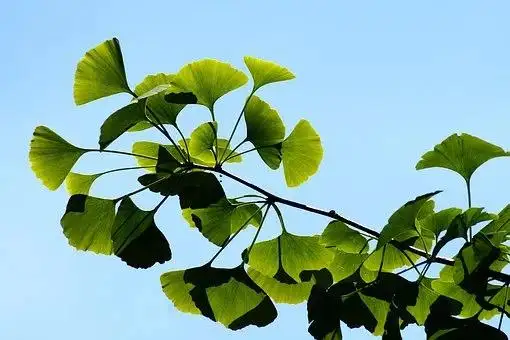Gingko biloba
Latin Name: Gingko biloba
Herb Class/Action: Circulatory Tonic, Nervine
Parts Used: Leaves, seeds
Flavors: Sweet, mildly bitter
Energetics: Neutral, mildly cool and dry
Traditional Benefits: Cardiovascular support, circulatory support, brain support, eye support, respiratory support
One of the world’s oldest living trees has gifted us with one of our most time-tested traditional herbs—aiding in cognitive, cardiovascular, and respiratory health.*
If a tree can survive a nuclear blast, outlast other trees planted within polluted cities by at least tenfold, and possibly even outlast the dinosaurs, it’s got to have a lot to teach us about resilience. Ginkgo biloba (more commonly shortened to Ginkgo; also known as maidenhair tree) has been around for as long as 200 million years, with its medicinal uses dating back ~5,000 years. It’s considered the world’s oldest surviving tree and trust me… it’s been through a lot!

In Chinese medicine, Ginkgo is said to help the lung Qi to “descend,” supporting respiratory health and easy breathing. It also supports peripheral blood flow to the brain, promoting healthy circulation; aids in heart health and blood vessel health; and more. It’s widely considered to be one of the most invaluable plant medicines—and one of the greatest gifts is that nowadays, it’s so easy to find. Native to China, the tree is now commonly grown in Europe and the United States as well.*
Because of its resilience and prevalence in traditional medicine, Ginkgo has been the subject of over 400 modern scientific studies. Clinical trials support ginkgo’s positive effects on supporting healthy brain function, mood, cardiovascular health, balanced inflammatory response, and respiratory function.*
According to the U.S. Forest Service, the average life expectancy of a tree planted in a city’s downtown area is 10 years. Ginkgos planted in downtown areas can live hundreds of years—withstanding pollution, soil compaction, pests, disease, salt, wind, cold, drought, fire, and more.

